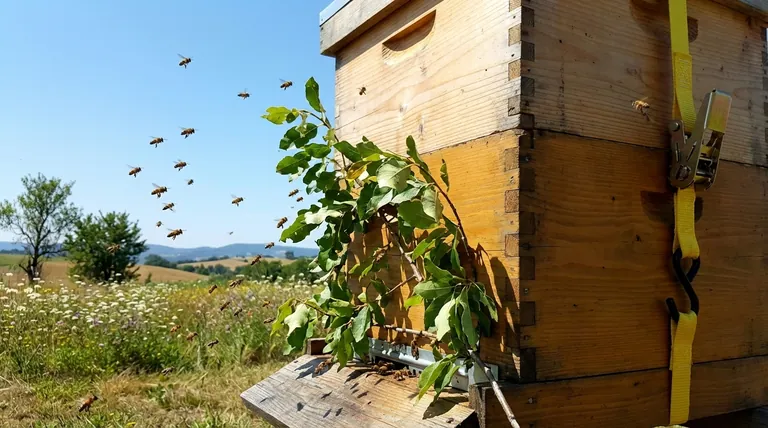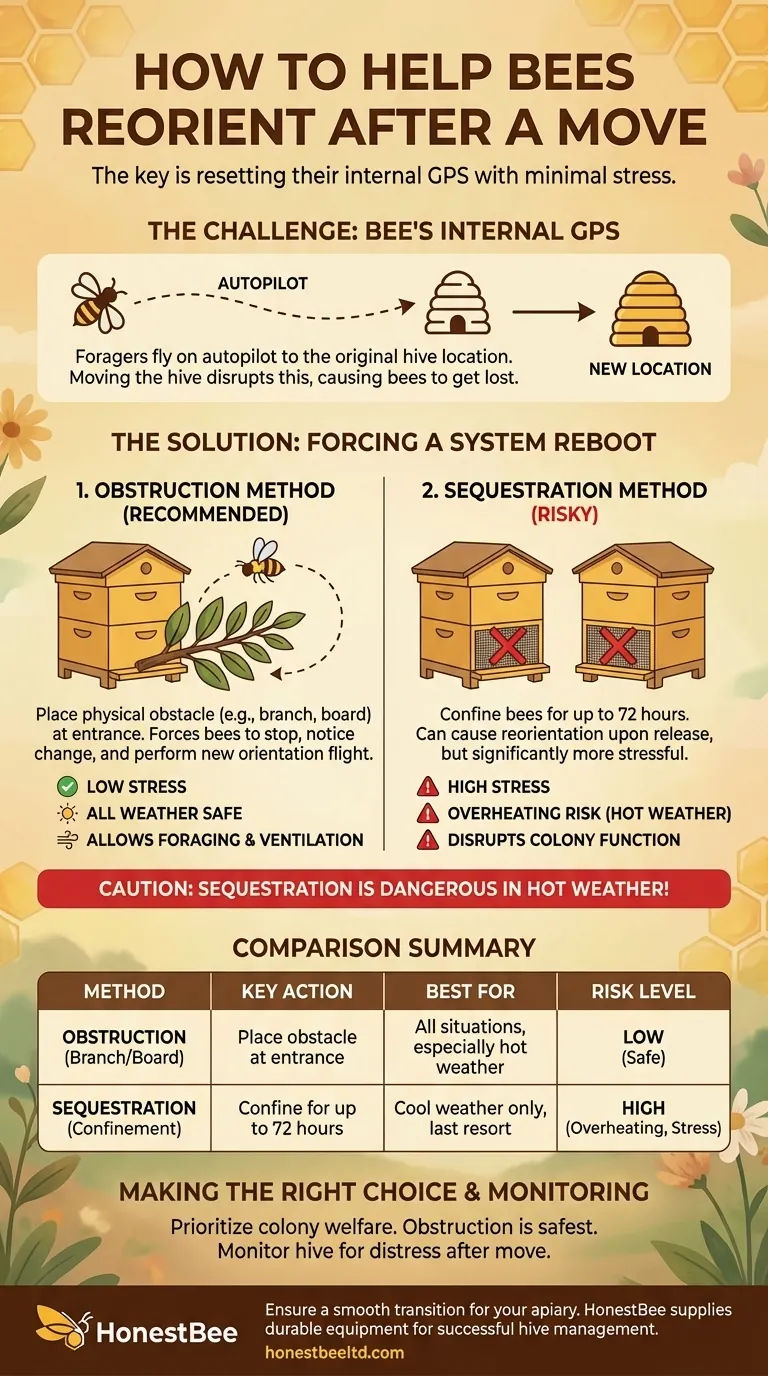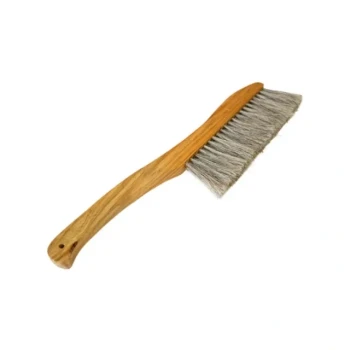To help your bees reorient after a move, the most effective and least stressful method is to place a physical obstruction, like a branch with leaves, directly in front of the hive entrance. This simple barrier disrupts their automatic flight path, forcing them to stop, take notice of the change, and perform a new orientation flight to map their new surroundings before they forage.
The core challenge of relocation is resetting a bee's internal GPS without causing undue stress. The goal is to force a conscious re-mapping of their environment, and the chosen method must prioritize the colony's well-being.

The Principle Behind Reorientation
Understanding a Bee's Navigational Autopilot
Foraging bees operate with an incredibly precise internal navigation system. After their initial orientation flights as young bees, they largely fly on autopilot, expecting their hive to be in a fixed location.
When you move a hive, this autopilot becomes a liability. Foragers will leave the hive and instinctively fly back to the original location, becoming lost and ultimately reducing the colony's strength.
The Goal: Forcing a "System Reboot"
The purpose of reorientation techniques is to break this autopilot. By creating an unfamiliar situation at the hive entrance, you force each departing bee to recognize that something significant has changed.
This triggers a new orientation flight—small, circular flights in front of the hive—where the bee actively memorizes the new location and its surrounding landmarks.
Proven Reorientation Techniques
The Obstruction Method
This is the most widely recommended technique due to its simplicity and low-stress impact on the bees.
Simply place a leafy branch, a board, or even a bundle of tall grass directly in front of the hive entrance. It should be significant enough that bees must crawl around or through it to exit. This novel obstacle is all that is needed to trigger their reorientation instinct.
The Sequestration Method
This alternative involves keeping the hive entrance screened or closed for a period after the move, typically up to 72 hours.
The extended confinement can cause some bees to reorient upon their eventual release. However, this method is significantly more stressful for the colony.
Understanding the Trade-offs and Risks
Why Obstruction is Preferred
The obstruction method allows the colony to maintain its normal functions, such as foraging and ventilation, without interruption. It is a gentle but effective nudge that works with the bees' natural behavior.
The Dangers of Sequestration
Confining a colony is inherently risky. Sequestration increases hive stress, which can make the bees more vulnerable to disease.
Most critically, this method is not recommended in hot weather. Poor ventilation can quickly cause the colony to overheat, leading to significant losses or the death of the entire hive.
The Importance of Post-Move Monitoring
Any relocation is a stressful event for a colony. Regardless of the reorientation method used, you must monitor the hive in the days following the move.
Watch for signs of distress, disease, or predation. Ensuring the colony is adapting well to its new environment is crucial for its long-term health and survival.
Making the Right Choice for Your Colony
The best approach depends on your specific circumstances and your priority for colony welfare.
- If your primary focus is safety and minimizing stress: Use the obstruction method. It is highly effective, safe in all weather, and does not interfere with colony function.
- If you are moving bees a very short distance (e.g., across a yard): The obstruction method is absolutely critical to prevent bees from returning to the hive's exact original footprint.
- If you are considering sequestration: Only attempt this in very cool weather and for the shortest duration necessary, while fully understanding the inherent risks you are placing on the colony.
A successful relocation hinges on thoughtfully managing the bees' natural instincts to ensure they adapt quickly and safely to their new home.
Summary Table:
| Method | Key Action | Best For | Risk Level |
|---|---|---|---|
| Obstruction | Place a branch/board at hive entrance | All situations, especially hot weather | Low |
| Sequestration | Confine bees for up to 72 hours | Cool weather only, as a last resort | High (overheating, stress) |
Ensure a smooth transition for your apiary after a move. Proper reorientation is key to maintaining colony strength and honey production. At HONESTBEE, we supply commercial apiaries and beekeeping equipment distributors with the durable, reliable supplies needed for successful hive management. Let our wholesale-focused expertise support your operation's health and productivity. Contact our team today to discuss your equipment needs.
Visual Guide

Related Products
- Versatile Ratchet Hive Strap with S-Hooks for Secure Fastening
- Professional Grade Foldable Beehive Handles
- Premium Comfort Grip Spring-Loaded Hive Handles
- Professional Drop-Style Hive Handles for Beekeeping
- Professional Galvanized Hive Strap with Secure Locking Buckle for Beekeeping
People Also Ask
- What is required to be a beekeeper? Essential Equipment, Knowledge & Mindset
- Why should a tie-down strap be used to secure a hive? Protect Your Colony from Tipping and Damage
- What should you consider when positioning the hive in the vehicle? Ensure a Safe & Stress-Free Move for Your Colony
- How should you secure the bees before moving them? A Guide to Safe, Stress-Free Hive Transport
- What should be done after placing the hive in its new location? Ensure a Smooth Transition for Your Colony



















